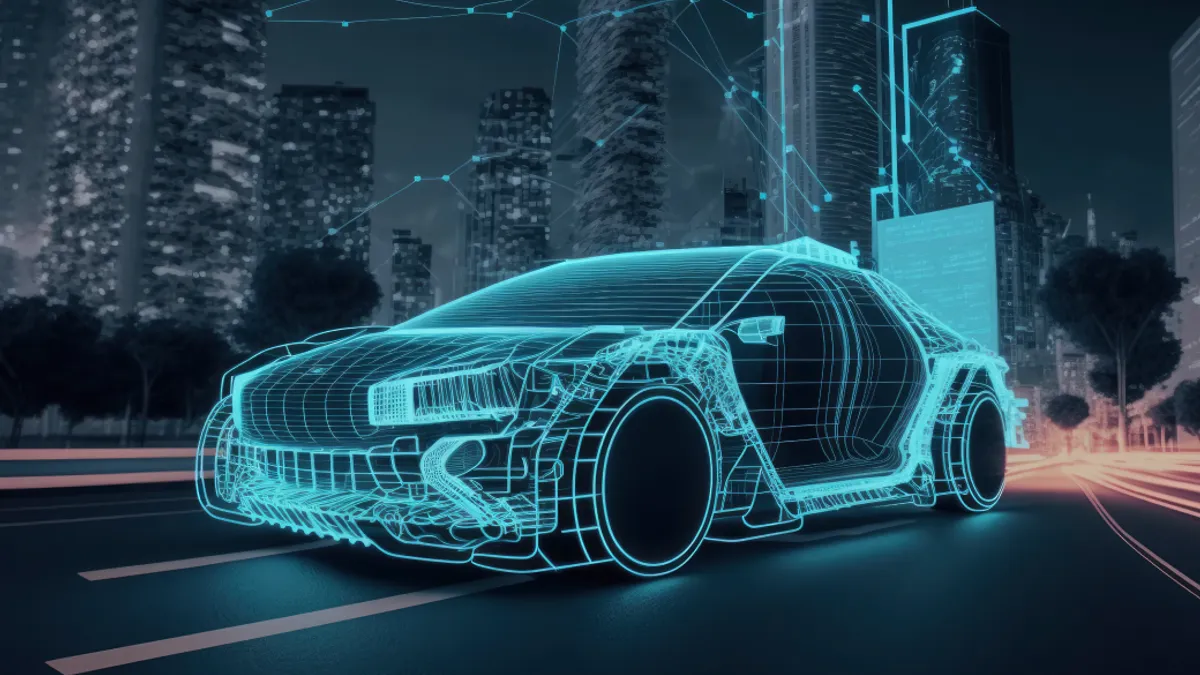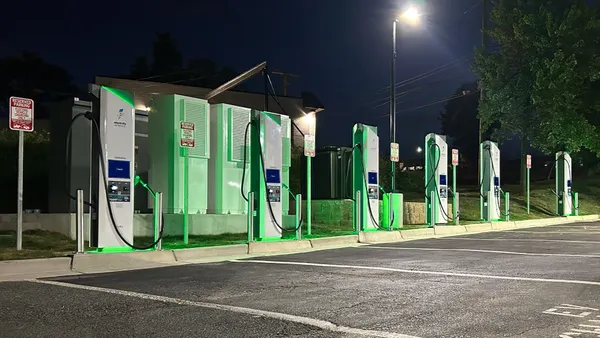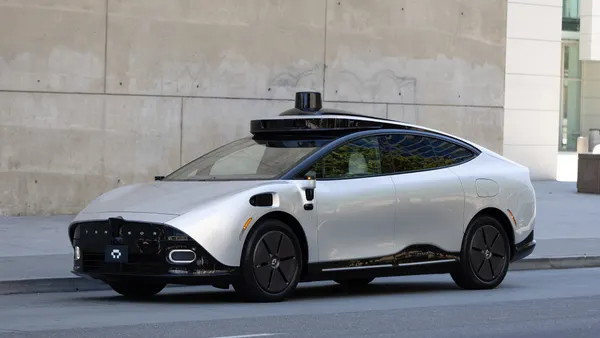According to a recent report by the International Energy Agency (IEA), global electric car sales exceeded 10 million in 2023, with projections showing a continued 5% y-o-y gain of the world vehicle production share Parallelly, over the past year, the average price paid for a new EV has declined by 21% in US. The EV prices will go on decreasing with the growing EV market share. These figures underscore the rapid advancements and adoptions in the Automotive market and the challenges of keeping the business sustainable and highly profitable in the longer future.
Despite the ongoing active technology adoption in the automotive world, the automotive industry is currently experiencing a stage of digital technology commoditization. New technologies become a must, generate user value, but bring ever lower financial value to producers.
While some technologies still generate hype, many have become standard practices. AI almost remains the "star," with autonomous driving still awaiting a breakthrough. Implementing software-defined vehicle (SDV) architectures has become necessary, but the degree of digitization varies greatly.
With the commoditization the uniqueness or inaccessibility of hardware, technologies, tools, or even developers is no longer a concern. Everything is relatively accessible, and the market is saturated with digitalization offers of vehicles and mobility services. However, despite the commoditization, achieving technological success is not guaranteed. We see numerous examples of both breakthroughs and failures in implementation.
The challenge is more than timing and implementation. Automakers and Tier-1’s have spent substantial amounts of money and missed multiple start-of-production (SoP) dates, often resulting in mediocre outcomes—not due to a lack of resources, talented engineers, or access to breakthrough technology licenses, but due to ineffective organization of the "production" of digital components. The greatest value now lies in creating an effective environment that ensures continuous development, testing, deployment, adaptation, scalability, the best developer experience, and effective resource utilization.
The current state of automotive and mobility technology
The automotive and mobility industry is experiencing a phase where digital technologies are no longer a novelty but a necessity.
Technological saturation and availability
The widespread availability of digitalization technologies in the automotive industry has made them mainstream. Real-time driving systems, ADAS, Android and iOS integration, IoT, and connected vehicle technologies are now integral to vehicle design, manufacturing, and functionality. According to a 2023 McKinsey report, the automotive sector has seen significant investments in digital technologies, focusing on enhancing vehicle connectivity, autonomy, and customer experience. However, these investments do not lead to marginality increases. The struggle is to keep the market share in a highly competitive turbulent market.
From hype to standard practice
Once considered futuristic, technologies like autonomous driving, advanced driver assistance systems (ADAS), and AI-powered systems have become essential components of modern cars. For example, BMW and Tesla have integrated AI-driven systems for predictive maintenance and autonomous driving, transforming these innovations into standard practices. As reported by KPMG, 75% of vehicles are expected to be highly autonomous by 2030, indicating a significant shift from hype to reality.
The continuous advancement and integration of digital technologies signify a pivotal shift in the automotive industry, setting the stage for future innovations and improvements in mobility services. The challenge is that this technology marathon requires investments and increases value for the user, but does not increase the product's price.
Continuous development, testing, and deployment
Continuous development, testing, and deployment are critical for maintaining innovation and ensuring high-quality vehicle performance and safety in the automotive industry.
Importance of a robust development environment
A continuous and integrated development environment fosters innovation and accelerates the time-to-market for new technologies. Such environments enable seamless collaboration among developers, reduce downtime, and ensure that updates and new features are quickly tested and deployed. As noted by Accenture, integrating continuous development practices helps automotive companies stay competitive and respond promptly to market demands.
Best practices for continuous testing and deployment
Implementing best practices for continuous testing and deployment is crucial for maintaining high-quality standards and accelerating time-to-market for new technologies.
- Automated testing tools. Utilize tools like Jenkins, Selenium, and Docker to automate testing processes, ensuring seamless integration and deployment of new code.
- CI/CD pipelines. Adopt continuous integration/continuous deployment (CI/CD) pipelines to streamline development and deployment processes.
- Cloud-based platforms. Leverage cloud-based platforms to enhance scalability and flexibility in testing and deployment.
- Version control systems. Implement version control systems like GitHub to manage code changes efficiently.
- Monitoring and feedback. Use monitoring tools to gather real-time feedback and identify issues promptly, facilitating continuous improvement.
- Security testing. Integrate security testing into the CI/CD pipeline to ensure the code is secure.
- Collaborative tools. Employ collaborative tools like JIRA for project management and team coordination, enhancing communication and productivity.
According to Forrester, companies that adopt CI/CD practices see a 20-30% improvement in deployment speed and a 20% reduction in defects, showcasing the significant benefits of these best practices. By implementing these best practices, automotive companies can achieve higher efficiency, reduce defects, and maintain a competitive edge in a rapidly evolving industry.
Developer experience and resource utilization
Enhancing the developer experience and optimizing resource utilization are pivotal for automotive companies to drive innovation and maintain competitiveness.
Enhancing the developer experience
Creating a supportive and efficient environment for developers fosters innovation and productivity. A positive developer experience leads to higher job satisfaction, better retention rates, and increased output quality. According to a Deloitte report, companies that enhance the developer experience see a 15-20% improvement in productivity and innovation.
Effective resource utilization
Optimizing resources such as talent, technology, and infrastructure is essential for achieving operational efficiency and maximizing return on investment. Companies can achieve this by leveraging advanced analytics to allocate resources effectively, employing agile methodologies to streamline workflows, and utilizing cloud-based platforms for scalable infrastructure.
Essential tools and methodologies
Implementing essential tools and methodologies is key to improving resource management and developer productivity.
- Version control systems. Implement GitHub for efficient version control and code management.
- Containerization tools. Utilize Docker for containerization to streamline development processes and enhance deployment efficiency.
- DevOps practices. Adopt DevOps practices to foster collaboration between development and operations teams.
- CI/CD pipelines. Implement continuous integration/continuous deployment (CI/CD) pipelines to ensure teams deliver high-quality software efficiently.
- Agile methodologies. Employ agile methods to improve workflow flexibility and adapt to changing requirements quickly.
- Automation tools. Leverage automation tools to reduce manual tasks and improve overall efficiency.
By adopting these tools and methodologies, companies can significantly enhance resource management and boost developer productivity, promptly ensuring high-quality software delivery.
Scalability and adaptation in the automotive industry
Scalability and adaptation are crucial for the automotive industry to keep pace with rapid technological advancements and evolving market demands.
The need for scalability
Scalability is essential in the automotive sector to ensure that new technologies can be effectively implemented and expanded across different models, markets, and user ecosystems. It allows companies to meet increasing market demands and integrate innovations without significant overhauls. As noted by McKinsey, scalable solutions enable automotive companies to rapidly deploy new features and improvements across their vehicle lineups, enhancing customer satisfaction and competitive advantage.
Strategies for successful adaptation
Adapting to changing technologies and market demands requires a flexible approach that includes continuous innovation, agile development processes, decontainiriazation within big organizations, and strategic partnerships. Companies must invest in modular platforms that allow for easy updates and integrations, ensuring that new technologies can be adopted without disrupting existing systems.
Embracing continuous development and deployment practices, optimizing resource utilization, and fostering a supportive developer environment are critical strategies to drive the next wave of innovation in the automotive and mobility sectors. For companies looking to conquer this transformation, strategic partnerships and technological investments will be essential to securing a competitive advantage in the rapidly changing landscape.
Contact us to learn more about leveraging automotive and mobility technology to make the hype a reality.










